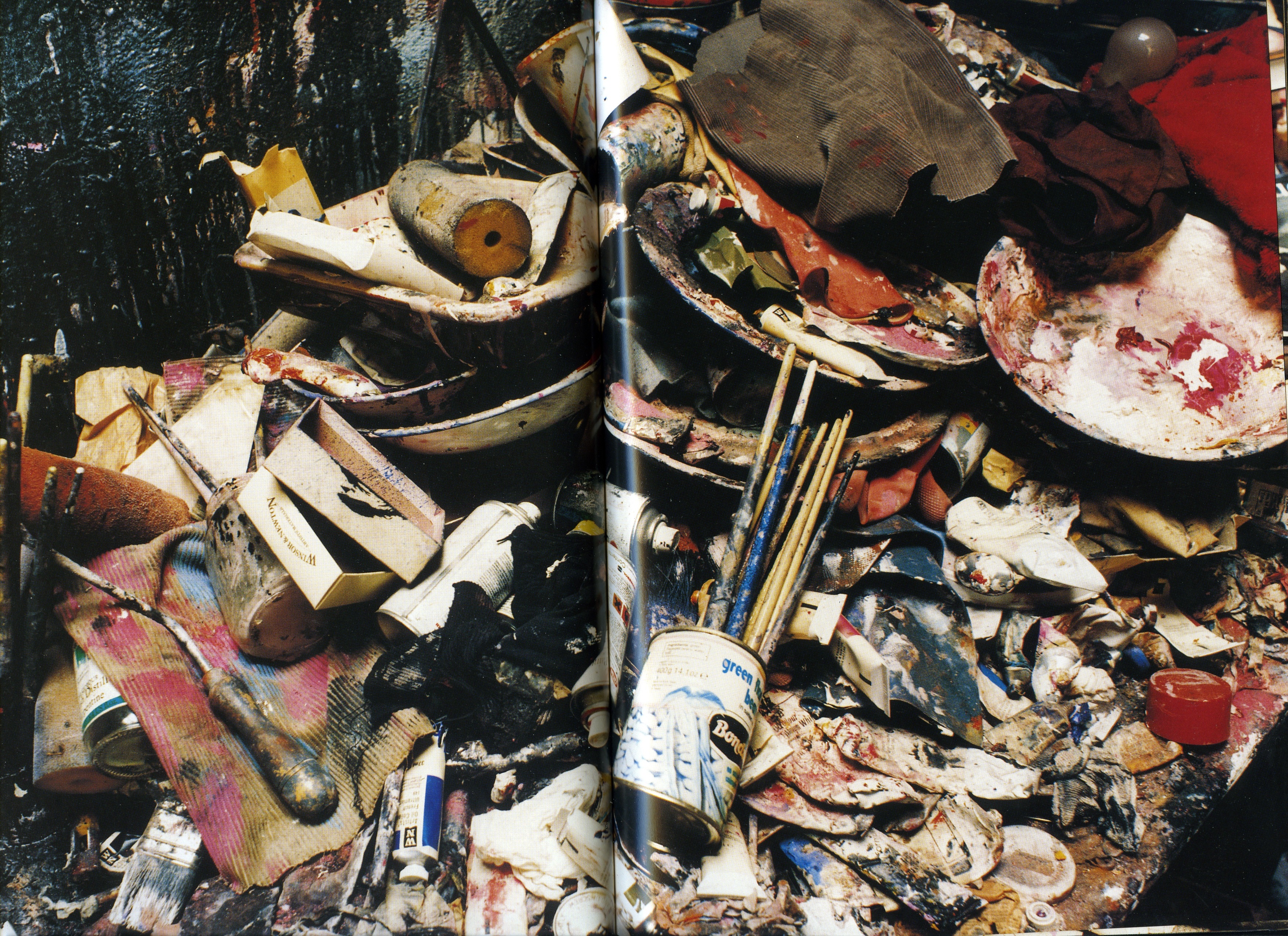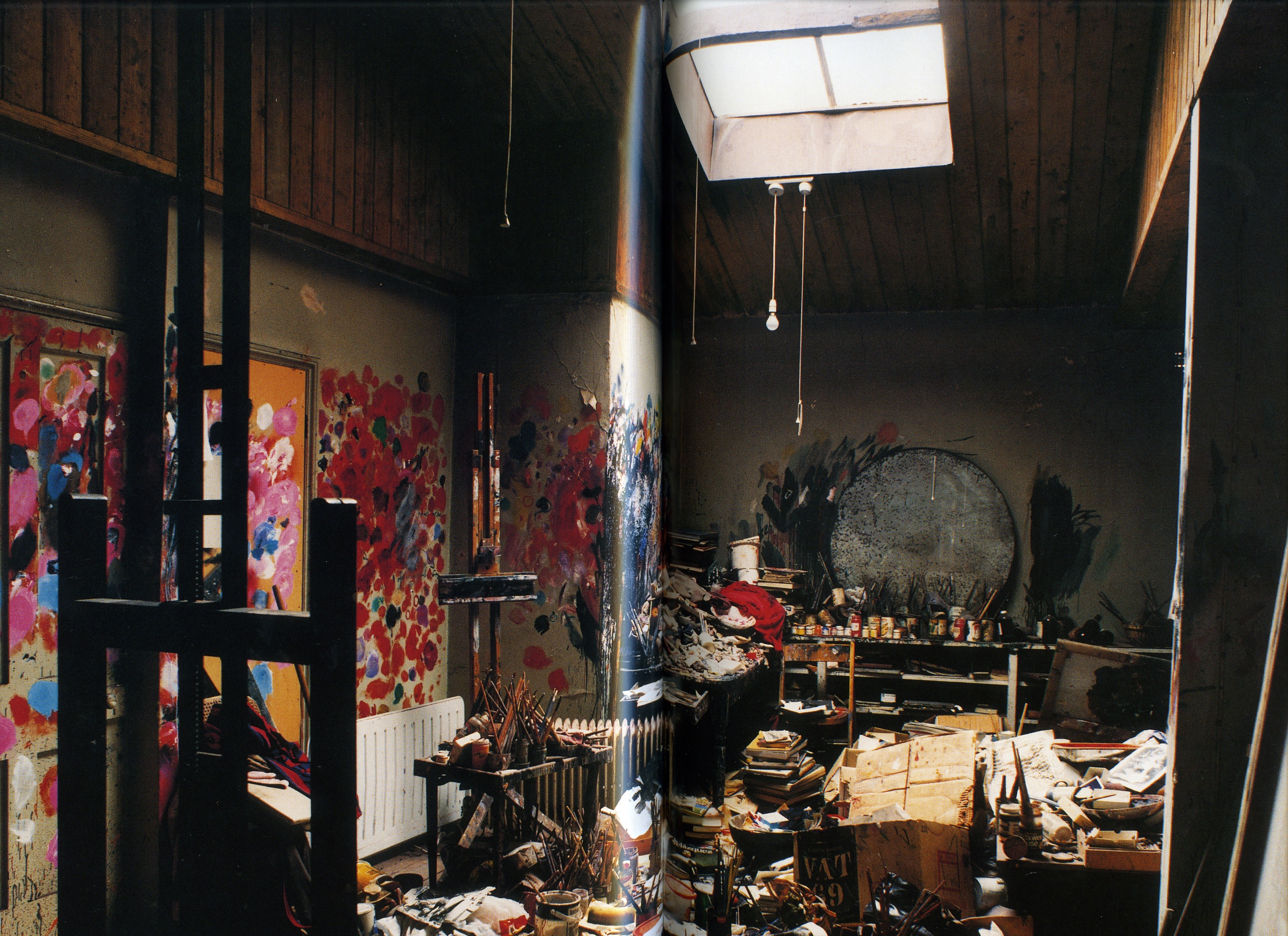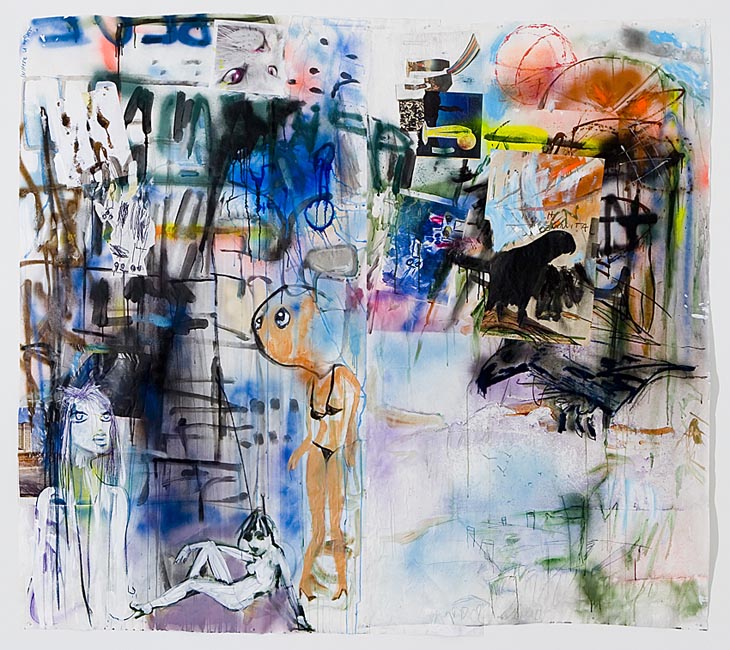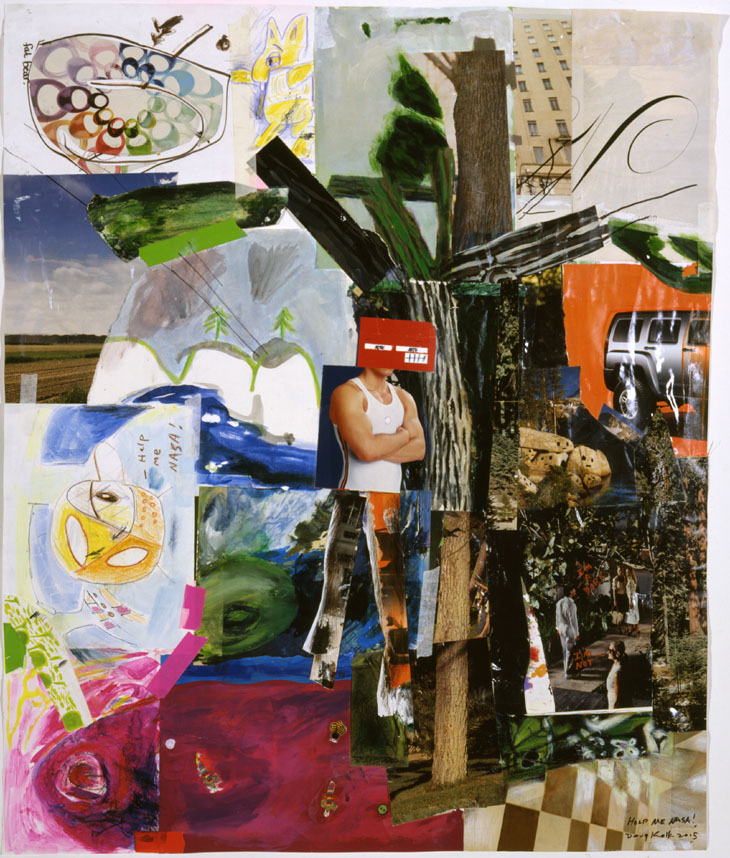The Great Battle Under the Table, 2006
Oil on canvas
190 x 165 cm / 74 3/4 x 65 in
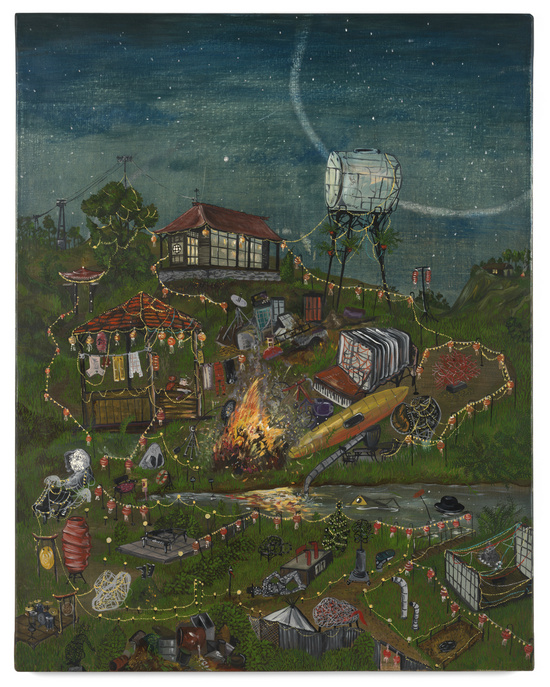
The Garden, 2008
Oil on canvas
105 x 82 cm / 41 3/8 x 32 1/4 in
--------------------------------------------------------------------------------------------------------------------
Jakub Julian Ziolkowski (b. 1980) - Polish painter, lives and works in Krakow, Poland.
Well, there seems to be a considerable, positive 'buzz' around this artist on the international art-scene... A Cinderella story, if one considers a newly graduated painter from a (still) 'provincial' Eastern Europe (Ziolkowski graduated from "Jan Matejko Academy of Art" in Krakow in 2005) having a successful, acclaimed exhibition in the Hauser and Wirth in London. At the moment, his paintings hang among others in MOMA - NY, at the prestigious "The Generational: Younger than Jesus" exhibition - a great, visionary event aiming at promoting the youngest, promising artists from around the world. And Jerry Saltz writes about them in the 'New York - Art Magazine': Jakub Julian Ziolkowski’s paintings aren’t about academic ideas of formalism, happy doodling, or mannered figuration; they’re visionary Bosch-meets-Ensor. (click on the link to read the entire review).
Not too bad at all as for an emerging artist...
Personally, what I find especially compelling about Ziolkowski's work, is ... its perverse realism...
"Realism?!" - I can hear you doubting - Call it sur-, call it magical -, call it dada-, but not just 'realism', for Christ's sake ...
Well, they are realistic paintings - I can guess so, seeing this particular painter as my never-met mate from the same yard. We share our generation, our actual and, in parts - spiritual landscape - being born and brought up in one culture at the same time... Our education belonged to one of the most classical in Europe (in the world?), we were still taught that Greek/Roman mythology, classical philosophy together with The Bible are totally responsible for how we think and perceive reality and ourselves.
So, reality is anything but a plaything to be messed with, reality is the residence of gods' and humans' stories - it exists to be reported, to be told, not to be ignored or subverted for the rebellion's own sake... We may be tempted, of course, to turn our backs on it, to exorcise it from all the evil, cruelty and confusion so deeply ingrained into its tissue. We are the Polish X-generation from 90s, 00s - born out of oppressed parents into a world that could hardly offer us anything, except a perpetual struggle for survival - to a country being itself a huge mess due to a political, economic and cultural transformation... Millions of us from this very generation, from highly educated to those 'just' 'resourceful' ones, had left their homes as soon as the borders of Europe had been finally opened... And crossing borders, alike staying behind on a land being slowly deserted by familiar faces and ideas - that makes one a realist - not matter what - a realist in a deep conflict with reality...
And there are hints of those intimate wars being fought in Ziolkowski's paintings - battles between a duty to tell the 'gods and humans' stories as they are, and the perversion of imagination, troubled by the insecure, heartless world around. Battles are fought under a table, while a huge spider-web covers after-Van Gogh's-like wheat-field (Untitled, above) ... well, it didn't surprise me when I read a reputable Polish author (of the older generation) commenting on Ziolkowski's 'dreamy hallucinations' and his 'private worlds of phobias'... Traditionalists would never accept Francis Bacon's concept of the 'concentrated reality' - being conveyed not merely as an illustration but an extract of it - presenting itself so intensely real that... mesmerizingly or shockingly unreal...
---------------------------------------------------------------------------------------------



